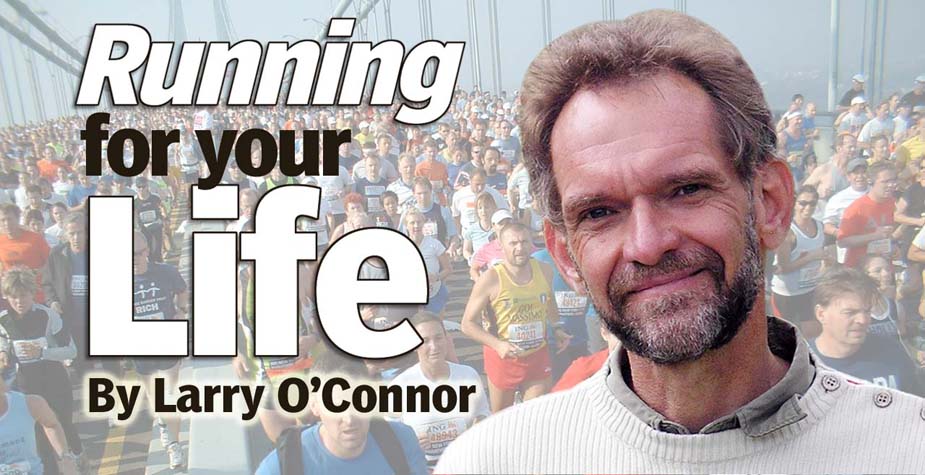Runners can be like farmers. Stubborn and independent. You can’t tell them anything. I know a bit about this because I was raised in farm country and have been both a regular recreational and a competitive runner for longer than most. Thirty-seven years this year, thrice a week running, more during marathon years (five; I’ve competed in six races but in 2010 I ran two in Pennsylvania: Pittsburgh and Scranton).
That’s about five thousand seven hundred seventy total runs; at a minimum average of five miles per run, we’re talking twenty-eight thousand eight hundred and fifty miles.
What’s surprising is that for most of those total miles I didn’t practice what I’ve been preaching on this blog. To mix it up. For years I never did. I just put on my running shoes and went out the door. But, heck, that’s not for every body.
And not for this body, either. Eventually it broke down. In February 2011 I tried to run through a strained hamstring like I always had – and suffered a severe hammy tear. It slowly healed, but afterward, for the past two years, I’ve been mixing it up, and thankfully that regimen has worked.
I’ve never felt as good as I do right now, and that’s after running close to thirty thousand miles, a milestone, so to speak, that I should be able to make in less than two years: thirty thousand miles before turning sixty: not Volvo numbers, by any means, but numbers you can live with.
Because it was my hamstring that broke down, that’s what I focus on. I don’t do much in the way of upper body conditioning. Except when I’m in marathon training (I adopt training techniques for 100 days before a race; otherwise I follow a strict pattern), I run one day, do a gym workout the next. In inclement weather, I use the gym treadmill, set at a higher incline and faster pace than I do outside as a means of strengthening (and also to keep alive my dream of improving on my marathon PR, which currently stands at 3:33:08).
As far as a gym workout is concerned, I predominantly stretch and strengthen in floor exercises: hammy, calf, groin and, most especially, core. A stronger core, it seems to me, has helped to soften my running gait so that I put even less strain on my hips and knees than I did when I wasn’t taking such precautions in the past.
It helps: I can’t stress it enough. In the beginning I found cross-training – especially stretching – to be the most excruciating waste of time. But as I run longer and with shorter and shorter periods of recovery time after long runs, I verge on the pedantic in my advocacy of a mix it up approach to running.
Wanna run for your life? Mix it up!
Next: Running for Your Life: Man’s Brain
